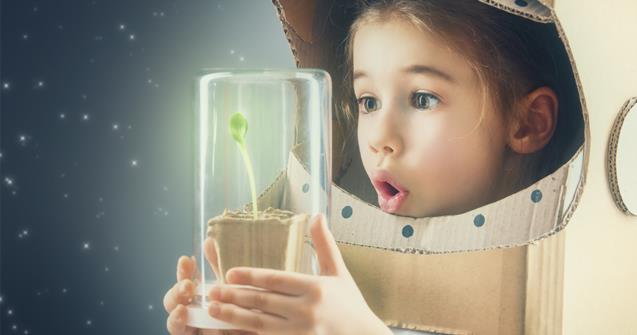
Globule wonders...
How can we identify an object without seeing or touching it?
Experiment: The black box
Caution: For this experiment, the caregiver must prepare the material PRIOR to the presentation. Read the caregiver's manipulations. This type of experimentation is called a "black box". If you wish, you may use the term "gift" to make it more attractive!
Hypotheses: Before letting the children manipulate the gifts as they please, ask them how they could guess the content of the boxes without opening them. Other than using their sense of sight and sense of touch, which other clues can they use to identify the objects?
Material:
- Different sizes of cardboard boxes, one per child (examples: cracker, granola bar, or cereal boxes)
- Objects which vary in weight, size, and shape, one per child (examples: coins, toy car, large marble, small ball, etc.)
- Adhesive tape or masking tape
- Wrapping paper, newspaper, paint, etc.
Caregiver's manipulations:
- Deposit one object inside each box making sure children do not see the objects.
- Seal the boxes with tape and wrap them with pretty paper or paint them.
Manipulations (children):
- Sit in a circle with your friends on the floor or around a table.
- Your caregiver gives you a gift. She also gives one to each of your friends.
- Hold the gift.
- Shake it, turn it in every direction, evaluate its weight, its size, its shape, and listen to the sound it makes for approximately 30 seconds.
- Try to notice as many clues as possible which will help you guess the content of the box (examples: it rolls/slides, it's light/heavy, it's big/small, it's hard/soft, it's noisy/silent).
- After 30 seconds, your caregiver will ask you to hand the gift to the friend sitting next to you.
- Repeat the same exercise until you have manipulated all the gifts.
- Once the gifts have travelled all the way around the circle, your caregiver will hold them up, one at a time. You may take turns saying what you think is in each box.
- Next, each friend opens one gift. You will see if you guessed correctly!
Explanation: Your brain allows you to identify all the objects which surround you. Often, your eyes are the ones which send a signal to your brain to enable it to recognize objects in your environment. When you cannot use your eyes to complete this task, your other senses must work harder than usual to help you collect other pieces of information your brain can analyze in order to recognize objects. For example, blind people's other senses (hearing, touch, smell, taste) are usually very developed to compensate for the fact that their sense of sight does not function normally.
Angélique Boissonneault
has a Bachelor's Degree in Biological Science. She has worked in a laboratory and tested her knowledge. She has taught Math, Chemistry, and Physics. She has also developed a simplistic and innovative approach designed to introduce young children to scientific experiments, old and new. She created her friend Globule. This character is sometimes red, and sometimes white. He guides little ones through their scientific experiments and discoveries. It is clear to see Angélique is passionate about children and science. Globule's Approach.

 Home
Home Theme activities
Theme activities
 Babies and toddlers
Babies and toddlers
 Arts and crafts
Arts and crafts
 Science
Science
 Creative recipes
Creative recipes
 Tips and tricks
Tips and tricks
 Special needs
Special needs
 Extra activities
Extra activities
 Educ-TV
Educ-TV
 Newsletter
Newsletter  Online store
Online store Educatall club
Educatall club

